What do we mean by empowerment?
The Hebe project has defined empowerment as the process by which a person's possibilities are increased so that they can make choices and take action in a consistent way in everything that affects their own life, participate in decision-making and, finally, intervene in a shared and responsible way in the community of which they are a part. (Soler, Trilla, Jiménez-Morales i Úcar, 2017).
What is the Hebe rubric?
The Hebe project has defined empowerment as the process by which a person's possibilities are increased so that they can make choices and take action in a consistent way in everything that affects their own life, participate in decision-making and, finally, intervene in a shared and responsible way in the community of which they are a part.
It's a tool for the self-evaluation of actions and socio-educational projects for the empowerment of young people. The rubric can be useful to evaluate youth empowerment projects and also to plan and implement socio-educational processes that aim to influence youth empowerment.
How is structured HEBE rubric?
The proposed rubric is made up of 9 areas corresponding to the nine dimensions of empowerment that the Hebe project has developed and validated in relation to youth empowerment. A total of 27 indicators concretise these nine dimensions. .
What are the dimensions of youth empowerment at the HEBE rubric?
The HEBE rubric is structured according to the nine dimensions that explain our concept of youth empowerment.
|
1.
Participation
|
- Be able to influence surroundings
- Involve oneself in group activities or collective projects
|
|
2.
Responsibility
|
- Voluntarily and realistically assume commitments and tasks
- Assume consequences of own decisions and acts
|
|
3.
Critical capacity
|
- Be able to analyse problems or situations
- Have own criteria regarding problems or situations
|
|
4.
Self-esteem
|
- Be able to face difficult or adverse situations
- Know own abilities and recognize own limits
- Be satisfied with oneself
- Feel sure of oneself
- Be able to show one’s natural self to others
- Feel recognized by others
|
|
5.
Meta-learning
|
- Be aware of having acquired and improved one’s own knowledge and abilities
- Have developed the ability to learn how to learn
- Be aware of the power gained in order to act
|
|
6.
Efficiency
|
- Be able to take decisions that achieve goals
- Be methodical and constant in carrying out tasks
- Meet the set goals
|
|
7.
Autonomy
|
- Have initiative
- The ability to choose can act in accordance with one’s convictions
|
|
8.
Community identity
|
- Identify public space as one’s own and make use of them
- Share the community’s social and cultural heritage
- Identify oneself actively with civic and associative processes that take place in the community
|
|
9.
Teamwork
|
- Involve oneself in teamwork
- Be able to exercise leadership in teamwork
- Be able to communicate
- Be able to negotiate and reach consensus
|
What does each indicator contain??
Each indicator is deployed in four graduated scenarios, from lower to higher levels of youth empowerment. Three options can be chosen for each scenario, depending on whether it corresponds fully to the identification of the described scenario, with a slightly lower identification or, where appropriate, with a slightly higher identification. The four scenarios presented in each indicator are summatory and cumulative, i.e. each scenario always includes and exceeds the previous one. Scenario 1 includes the possibility of not working specifically on the indicator in question.
When choosing one of the scenarios in each rubric, it is recommended that the choice be accompanied by evidence to support and accredit the choice made. For this purpose, a specific section has been provided which asks 'Why was this scenario chosen?' This evaluation will make it possible, on the occasions when the rubric is used, to have a clear criterion with which to assess whether or not the results that support each position have been improved. It also includes a section for reflections and suggestions for improvement, in which the elements that will allow the indicator to work better in the future can be noted.
How was the HEBE rubric built?
This instrument is the result of a methodological process that included 4 phases:
- The contrast of dimensions and indicators of empowerment with the scientific bibliography specialized in youth empowerment.
- Contrast with young people from four participatory evaluation processes and six stories of life of young people.
- Validation by experts. This validation has been developed in two phases:
- Internal validation through 5 members of the HEBE team who had not participated in the construction of the rubric.
- External validation with 25 validators, among which there are professional experts in the field of formal education (high schools), sociocultural animation and youth policies, occupational education and specialized education.
- The pilot application to 20 socio-educational projects with young people .
Who can apply the HEBE rubric?
The rubric is designed to be applied to both projects and socio-educational actions developed by an educator or a team of educators. It can be applied to projects or actions developed by educators with any group of young people.
How should we apply the rubric?
Once registered in the aplication,it is reccomended for each indicator:
- Select the scenario that most closely corresponds to the situation in which the project or actions to be evaluated are identified. The position in each scenario is necessarily approximate. The HEBE rubric is designed to evaluate how the pedagogical work of a trainer or a team of trainers (self-evaluation) or of a project promotes the empowerment of young people In any case, the formulation of each scenario must be started with the corresponding expression:
- Educator…
- The project…
- Justify your choice by providing evidence. (What is it based on to be on the chosen stage? What actions have been taken to position it in this scenario?).
- Reflect and propose improvements that can be used as a guide for the formulation of new projects or actions.
This tool does not need to be used only by experts. The only condition necessary to apply it is the commitment and motivation to reflect and improve the socio-educational practice. Any professional who is interested in improving his or her socio-educational practice can use the rubric. It is therefore a tool that can be used both by the professional himself/herself and by external actors. In the case of self-application by an educational team, it is recommended to do so through a process of joint reflection by the professionals who make up the team.
What does the application of the rubric offer?
The rubric aims to encourage reflection, learning and guidance on socio-educational projects and interventions in favour of youth empowerment. It is not intended to compare projects or interventions.
The results obtained from the application of this rubric will allow to know in which measure the project or the socio-educational actions developed facilitate the empowerment of young people. This means that it can also be used for learning and improving the decision-making on the programming and development of actions that help the empowerment of young people.
It aims to contribute to facilitating a way of showing how the work of empowering young people and promoting reflection and consolidation of good practice is being developed.
The aplication generate two types of products:
- A summary graph of the evaluation carried out, showing the score obtained in each of the nine dimensions. This graph makes it possible to quickly and accurately determine the situation of the project in terms of youth empowerment.
- A brief report for each of the nine dimensions. This report includes a specific graph showing the results of the respective indicators and a list of reflections and suggestions for improvement for each of the indicators evaluated.
What do we need to take into account when interpreting the results?
The interpretation of the results of the rubric must take into account the particular and specific characteristics of each specific group, as well as the limitations that can be derived from the context in which it is developed. The aim is that they are useful and lead to improvement..
When is it recommended to use the rubric?
The tool is designed to be used periodically. It is recommended to use it annually in order to monitor the evolution and progress of each project or socio-educational service. The typology of each project or service can determine a more or less periodic application.
How long does it take for the rubric to be applied?
As a guideline, we think that its application can mean:
- A first meeting of the committee responsible for applying the self-assessment rubric. In this case, a reading and initial discussion of the 27 indicators is recommended. In each case, it will be necessary to discuss the position of the members. It would be good if this first meeting could identify the data, actions, documents or information to be sought in order to finalise the evaluation and the evidence that will accompany each of the answers to the rubric.
- The second committee meeting, in which all the material and information collected are shared. If there is time, the 27 indicators are reviewed and applied with the respective evidence and arguments..
- If deemed necessary, a third and final meeting can be held to finish the self-assessment, if it is not finished, and make the decisions that are considered appropriate as a result of the results obtained.
We therefore understand that ideally it can be resolved in two or three meetings. However, there are cases where the rubric has been applied in a single meeting.
Who created the rubric?
The rubric for the evaluation of socio-educational actions and youth empowerment projects presented here is part of the Hebe Project. A research on youth empowerment. It is a line of research developed since 2014 and promoted by five universities. It was led by the University of Girona with the involvement of the Autonomous University of Barcelona, the University of Barcelona, Pompeu Fabra University and the Autonomous University of Madrid.
This work has been funded by the by the Ministry of Science, Innovation and Universities (MICIU), the State Research Agency (AEI) and the European Regional Development Fund (ERDF, EU): State R+D+I Program Oriented to the Challenges of Society 2013 Ref.: EDU2013-42979-R AND State R+D+I Program Oriented to the Challenges of Society 2017 Ref.: EDU2017-83249-R.
You can consult the relationship of the research team of the research project, as well as the different products generated, on the web
projectehebe.com
Who can we contact for more information?
If you would like to contact the people responsible for the UdG research project, you can do so by emailing them at
hebe@udg.edu or telephone
972418027






